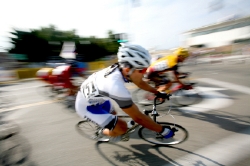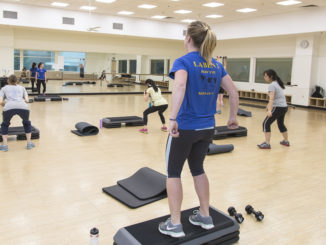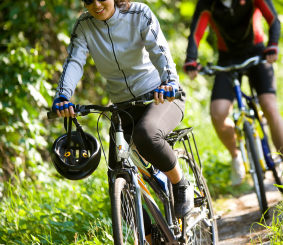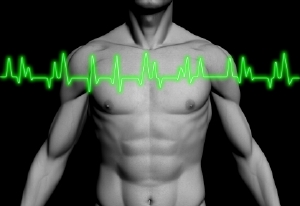
Because triathlon cycling is the lengthiest portion of the race, both in time as well as in distance, it is critical to be efficient and comfortable when you ride.
If you learn to be smooth during triathlon cycling, you can save energy for the final running segment of the race.
A great number of tips that you can follow are easy to learn that will ensure that your triathlon cycling skills are as even and effortless as possible.
10 Tips For Cycling In A Triathlon
Here are ten of the best triathlon cycling tips for enhancing your racing skills:
1: Positioning
The height of you seat is vital. You will have the most power in your legs when they are near extended. You want the seat of your bicycle during triathlon cycling to be situated so at the bottom of your pedal stroke, your leg is bent slightly.
If your seat is positioned too high, your hips will bounce as you pedal; too low and you risk pain to your knees. Your back needs to be as flat as possible when you are riding.
2: Tires
For triathlon cycling, your tires need to be aired up to the maximum pressure recommended. This will reduce rolling resistance and help avoid pinch flats. To add rolling resistance, big knobby tires are best. Road tires are smooth and thin, allowing for greater inflation pressure.
3: Chain
The chain of your bicycle during a triathlon cycling competition needs to be lubricated and clean. Of course, you need to check your breaks to make sure there is no rubbing.
4: Shoes
Shoes with stiff soles are more efficient in transferring energy. If you push down, it does more than simply bend your shoe, it pushes down on the pedal. If you do not have a pair of triathlon cycling shoes, stiff sole shoes should do the trick.
5: Pedaling Speed
Initially, when you get on your bike, you naturally tend to ride at around sixty to eighty revolutions a minute. However, the most efficient pedaling speed for most riders in a triathlon cycling competition is from ninety to one hundred ten revolutions per minute, depending on the driver as well as the terrain. You should practice your pedaling speed until it is second nature to you.
6: Relaxed Arms
You should not hold onto the handlebars of your bike as if the thing is trying to get away from you, nor should you ride with your elbows tightly locked. Your elbows need to be bent; this will give you a more controlled grip.
This will keep you from overexerting yourself and wasting precious energy that you need to finish the race with the best possible time. In addition, you will also be able to ride in a straighter line.
7: Warm Up
You may believe that a minimal workout means that you are conserving energy for the upcoming triathlon cycling events. However, it is important to ensure that you are sweating already and your body is ready so get blood pumping to all of your muscles. You will not be using up much energy to do this. In addition, it is a great way to burn off the nervous energy of being in a competition.
8: Realistic Goals
When you start training for your triathlon cycling event, make sure that the goals you set are realistic. Triathlon cycling can be dangerous it is important not to be over ambitious to ensure good health as you train.
9: Toe Clips
Toe clips do not cost a lot of money and they are actually rather useful, especially during triathlon cycling events. Toe clips help you keep your foot attached firmly to the pedal and all the energy from your legs are transferred more efficiently to the pedal.
10: Clipless Pedals
Clipless pedals combined with a good pair of cycling shoes and cleats that lock onto your bike pedals are especially efficient. If you participate in triathlon cycling events on a regular basis, you need to consider using clipless pedals for the greatest efficiency when you ride.




Be the first to comment